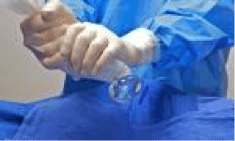Posted July 15, 2014 in Cosmetic Surgery Articles
3 minute read

According to American Society for Aesthetic Plastic Surgery, in 2012 approximately 72% of breast augmentation patients in the U.S. chose to have silicone breast implants rather than saline. This represents a significant shift in patient and surgeon preference since the re-introduction of silicone implants for primary breast augmentation. Today’s fourth generation silicone implants have thicker more durable shells, more solid gel, and less leakage or bleed than earlier generation implants. These improvements are a result of improved manufacturing techniques, over twenty years of implant research, and better design. Together these advances have given patients and surgeons more confidence regarding the safety of silicone implants.
From a patient’s perspective silicone implants feel more natural than saline implants. From a surgeon’s perspective silicone implants have a lower risk of wrinkling and palpability in patients with little breast tissue to cover the implants. Despite these advantages, silicone implants are pre-filled requiring a larger incision to place a silicone implant in comparison to a saline implant. Placement also requires a significant amount of force to fit the implant into the breast. There is also potential for bacterial contamination of the implant during placement as the implant comes into contact with the patient’s skin. These technical issues may contribute to the rate of implant rupture, scarring around the implant and infection.
The “No-Touch Technique” using the Keller Funnel has played an increasingly important role in silicone breast augmentation since its introduction in 2009. This efficient technique uses the Keller Funnel to facilitate placement of silicone implants into the breast without the implant coming into contact with the surgeon’s gloves or the patient’s skin. The technique, which uses a slippery, coated funnel shaped device, represents a significant improvement in our approach to silicone breast augmentation. By reducing contact it significantly reduces the chances for bacterial or foreign body contamination to the implant prior to placement. The technique also allows surgeons to place a silicone implant into the breast with 95% less force, a 50% reduction in potential contamination, and through a smaller incision. This represents a potential reduction in the risk of infection, painful capsular contracture and implant rupture. The “No-Touch –Technique” can also facilitate the placement of silicone implants through either of the three most commonly used incisions including the fold under the breast, around the areola, or from the armpit. If you are considering breast augmentation with silicone implants, ask about how the “No-Touch-Technique” and the Keller Funnel can make your operation safer!
